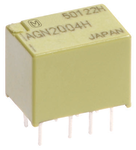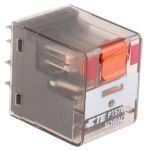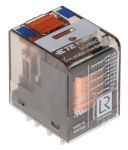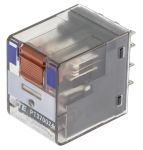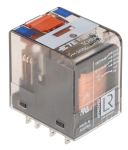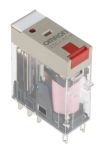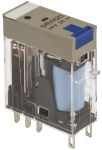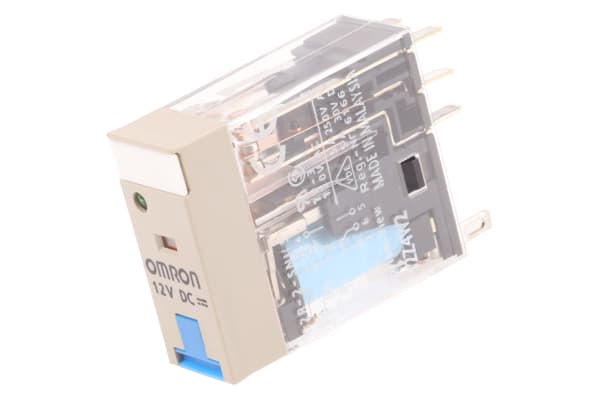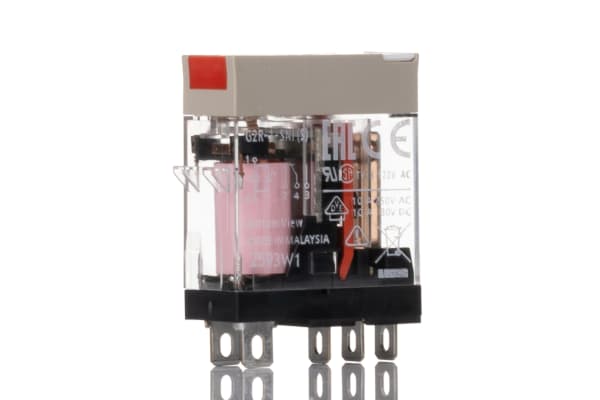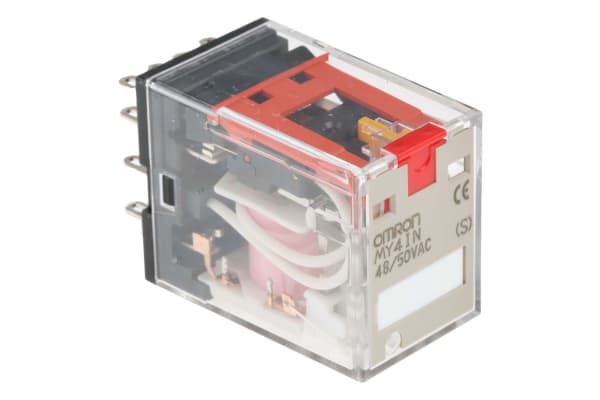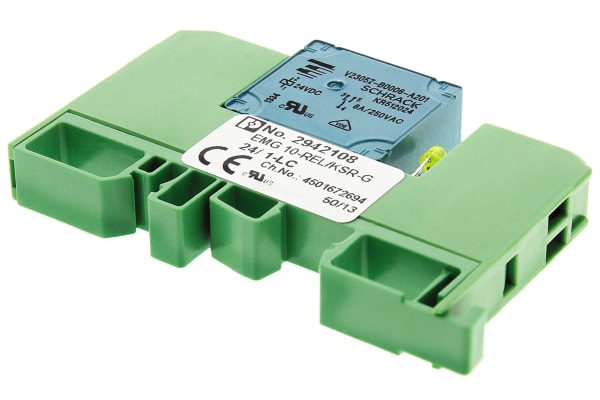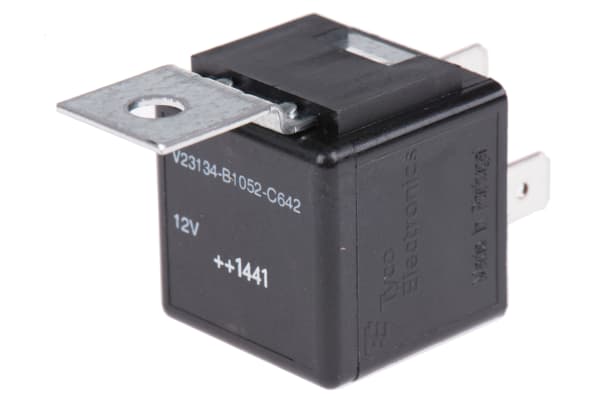Non-Latching Relays
Relays are electrical switches that are operated by electrical impulses with the primary function to open and close a circuit, they can also be referred to as industrial switches. There are 2 main types available, latching and non–latching relays.How do non-latching relays work?Non-latching relays are in a normally closed (NC) position and will stay in this state without power. When power passes through the circuit, the relay switched to a normally open (NO) position by using an internal coil to generate a magnetic force, holding this NO position. Once the current is turned off, it returns to the NC position. This makes non-latching relays well suited to push-button applications like keyboards and micro-controller input buttons.What are non-latching relays used for?Non-latching relays are highly durable and versatile components, making their performance long lasting and suitable for use in a wide range of applications, such as:Automotive enginesHousehold appliancesIndustrial machineryMedical equipmentTelecommunications equipmentWhat is the difference between latching and non-latching relays?Both types of relays in similar in design and function, however, a significant difference between them is that a latching relay will remain in the last position it when it was last powered, whereas a non-latching goes back to its normal position. This makes each more type of relay suitable for different applications. Considerations when selecting a relayWhen choosing a relay, it is important to consider a number of specifications to ensure it is fit for purpose, some factors include:Coil voltage – the required voltage to actuate the switching mechanism. If a voltage is too high this could damage the components, if it is too low then it will not actuate. Contact configuration – This is the state the contacts are in without power. For example SPST, single pole single throw.Contact material – the relay contacts are available in many materials that have certain properties. Common materials are gold, silver, tin oxide and nickel Coil power – the amount of power (watts) the coil operates at. This must match the power in the circuit for correct function. Coil resistance – the amount of resistance (ohms) in the circuit that the coil creates.
-
Panasonic, 4.5V dc Coil Non-Latching Relay DPDT, 1A Switching Current PCB Mount, 2 Pole, AGN2004H
IDR95,974.35 -
TE Connectivity, 230V ac Coil Non-Latching Relay 4PDT, 6A Switching Current PCB Mount, 4 Pole, PT570730 9-1419111-1
IDR171,075.59 -
TE Connectivity, 24V ac Coil Non-Latching Relay 4PDT, 6A Switching Current Plug In, 4 Pole, PT570524 8-1419111-7
IDR156,076.32 -
TE Connectivity, 24V dc Coil Non-Latching Relay 4PDT, 6A Switching Current Plug In, 4 Pole, PT570024 1-1393154-2
IDR164,152.85 -
TE Connectivity, 24V dc Coil Non-Latching Relay 3PDT, 10A Switching Current PCB Mount, 3 Pole, PT370024 6-1419111-1
IDR147,685.12 -
TE Connectivity, 24V dc Coil Non-Latching Relay DPDT, 12A Switching Current PCB Mount, 2 Pole, PT270024 4-1419111-2
IDR129,434.26 -
Omron, 24V dc Coil Non-Latching Relay DPDT, 5A Switching Current Plug In, 2 Pole, G2R-2-SNDI 24DC(S)
IDR318,760.71 -
Omron, 230V ac Coil Non-Latching Relay DPDT, 5A Switching Current Plug In, 2 Pole, G2R-2-SNI 230AC(S)
IDR480,605.98 -
Omron, 24V ac Coil Non-Latching Relay DPDT, 5A Switching Current Plug In, 2 Pole, G2R-2-SNI 24AC(S)
IDR238,624.75 -
-23.80%
Omron, 24V dc Coil Non-Latching Relay DPDT, 5A Switching Current Plug In, 2 Pole, G2R-2-SNI 24DC(S)
IDR172,229.38IDR130,797.83 -
Omron, 12V dc Coil Non-Latching Relay DPDT, 5A Switching Current PCB Mount, 2 Pole, G2R2SNIDC12(S)
IDR172,229.38 -
Omron, 24V dc Coil Non-Latching Relay SPDT, 10A Switching Current Plug In Single Pole, G2R-1-SNDI 24DC(S)
IDR184,081.95 -
Omron, 12V dc Coil Non-Latching Relay SPDT, 10A Switching Current PCB Mount Single Pole, G2R-1-SNDI DC12(S)
IDR196,563.86 -
Omron, 230V ac Coil Non-Latching Relay SPDT, 10A Switching Current Plug In Single Pole, G2R-1-SNI 230AC(S)
IDR440,118.44 -
Omron, 12V dc Coil Non-Latching Relay SPDT, 10A Switching Current PCB Mount Single Pole, G2R1SNIDC12(S)
IDR139,084.14 -
Omron, 12V ac Coil Non-Latching Relay 4PDT, 5A Switching Current Plug In, 4 Pole, MY4 12AC(S)
IDR109,295.38 -
Omron, 48V ac Coil Non-Latching Relay 4PDT, 5A Switching Current Plug In, 4 Pole, MY4INAC4850S
IDR206,738.19 -
Phoenix Contact, 24V dc Coil Non-Latching Relay DPDT DIN Rail, 2 Pole, 2940391
IDR1,361,052.64 -
Phoenix Contact, 24V dc Coil Non-Latching Relay SPDT DIN Rail Single Pole, 2942153
IDR1,113,407.35 -
Phoenix Contact, 24V dc Coil Non-Latching Relay SPNO DIN Rail Single Pole, 2942108
IDR804,611.19 -
TE Connectivity, 24V dc Coil Automotive Relay SPNO, 40A Switching Current Plug In Single Pole, V23134B1053C642
IDR205,164.84 -
TE Connectivity, 12V dc Coil Automotive Relay SPNO, 40A Switching Current Plug In Single Pole, V23134B1052C642
IDR188,172.66 -
TE Connectivity, 12V dc Coil Automotive Relay SPDT, 40A Switching Current Plug In Single Pole, V23134A1052C643
IDR228,765.09 -
Finder, 230V ac Coil Non-Latching Relay 3PDT, 16A Switching Current Plug In, 3 Pole, 62.33.8.230.0040
IDR305,229.90



